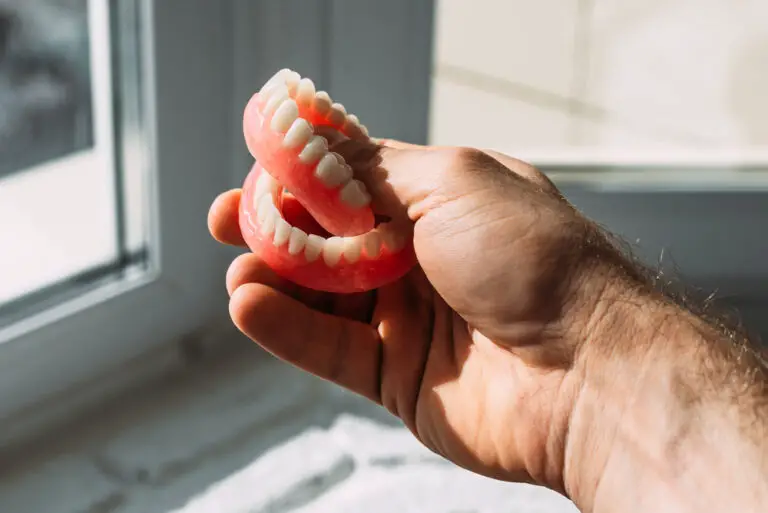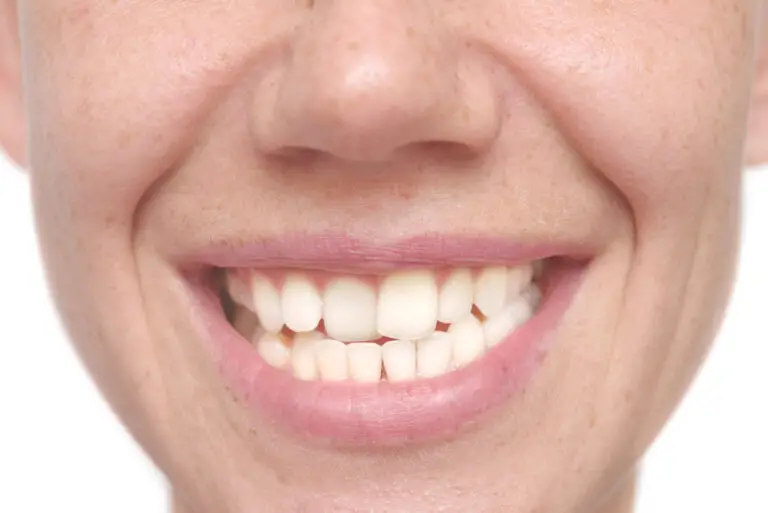How many teeth can be extracted at once?
The number of teeth that can be safely extracted in one appointment depends on several factors, including the patient’s overall health, the difficulty of the extractions, and the dentist’s experience. There are no absolute limits on how many teeth can be removed at one time, but most dentists will extract between 1-5 teeth per visit. Extracting a large number of teeth in a single session can increase the risks of complications and a prolonged recovery.
Key Factors That Determine How Many Teeth Can Be Extracted at Once

- Patient’s health: Patients with chronic medical conditions like diabetes or heart disease may only be able to withstand a smaller number of extractions per visit. The same may apply to elderly patients or those with compromised immune systems.
- Difficulty of extractions: Simple, easy extractions of teeth that are fully erupted typically allow for more teeth to be removed in one appointment. Impacted, fractured, or infected teeth that require more complicated extraction techniques often mean fewer teeth should be extracted during the same visit.
- Dentist’s experience: Dentists who frequently perform extractions may be more comfortable extracting more teeth in a single visit than dentists who rarely do extractions. Oral surgeons are specialists who focus on tooth extractions and can usually extract more teeth at once.
- Location of the teeth: If the teeth being extracted are clustered together in one section of the mouth, more may be able to be extracted at once. If the teeth are scattered throughout different quadrants, it may be advisable to split the extractions into multiple visits.
- Use of sedation: The use of sedation like general anesthesia allows the dentist to extract more teeth in one sitting since the patient is completely asleep and unaware. Local anesthesia limits how many teeth can be extracted at once since the numbing effects wear off over time.
Recommended Limits Based on Difficulty and Number of Teeth Being Extracted
Here are some general guidelines on the maximum number of teeth that can reasonably be extracted in one visit based on the classification of the extractions:
- Simple extractions: Usually 4-6 teeth
- Moderately difficult extractions: Usually 2-4 teeth
- Very difficult/surgical extractions: Usually 1-2 teeth
For example, extracting 3 moderately difficult wisdom teeth in one quadrant of the mouth would be considered the max for one visit. Or extracting 1 or 2 impacted wisdom teeth plus 2-4 straightforward extractions may be feasible.
Dentists typically will not extract more than 6-8 total teeth during a single appointment even if the extractions are fairly simple. And extracting more than 2-3 surgically difficult teeth requiring cutting, sectioning, bone removal or tooth sectioning is not recommended in one session either.
Implications of Extracting Too Many Teeth at Once
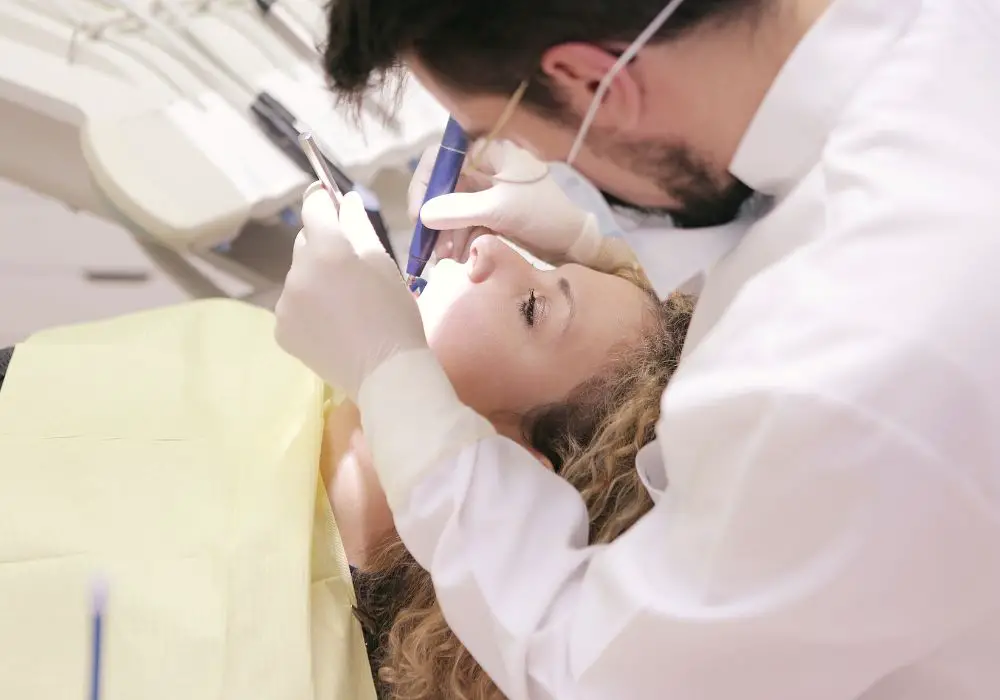
While it may seem convenient to get all needed extractions completed in one appointment, there are risks associated with removing too many teeth in a single visit:
- Increased pain and swelling: Removing a large number of teeth at once will likely increase post-operative pain, swelling, and discomfort requiring a longer recovery period.
- Higher risk of infection: Extracting numerous teeth in one area can increase the risk of developing a localized infection called dry socket which is very painful.
- Possibility of excessive bleeding: Taking out too many teeth can sometimes lead to bleeding that is difficult to control, especially in patients with blood clotting disorders.
- Damage to jaw bones: Extracting a significant number of teeth all together in the same region can potentially weaken the jaw bone structure over time.
- Increased chances of other complications: Issues like sinus exposure, nerve injuries, and issues with proper healing are more likely when a significant number of teeth are extracted all at once.
Important Factors for Dentists to Consider
Dentists must carefully evaluate the unique circumstances of each patient when determining appropriate numbers of teeth to extract per visit. Here are some important considerations:
- Evaluate the patient’s stamina and pain tolerance – lengthy procedures with substantial bleeding and multiple injection sites may be poorly tolerated by some patients.
- Assess medications – patients taking blood thinners may have prolonged bleeding after multiple extractions.
- Consider presence of any infections – avoid extracting teeth in multiple infected areas in the same visit.
- Evaluate healing capability – some medical conditions impair healing so smaller number of extractions may be indicated.
- Determine impact on appearance – extracting multiple anterior teeth at once can significantly impact smile aesthetics.
- Assess bite/function – extracting too many posterior teeth simultaneously can affect chewing.
- Review periodontal health – patients with extensive gum disease may not be good candidates for multiple extractions in a single visit.
- Consider any sinus involvement – removing multiple teeth in the upper posterior areas risks exposing or injuring the sinuses.
- Avoid excessive tissue trauma – bone and soft tissues can only withstand so much surgical trauma in one area at one time to heal properly.
Helpful Strategies to Break Up Extractions into Multiple Visits
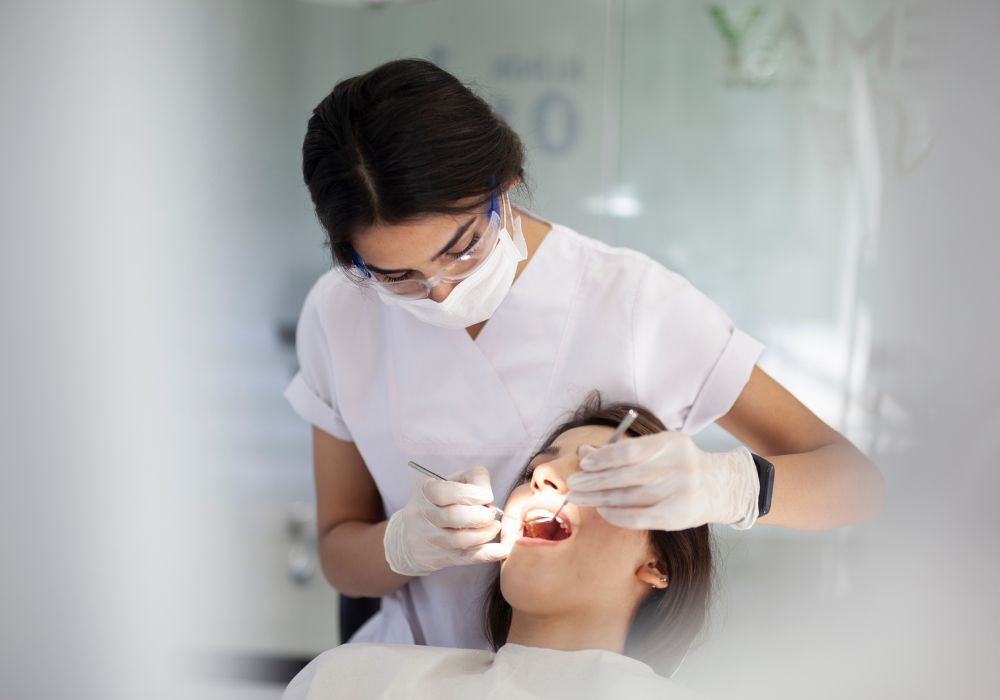
When planning complex or extensive extractions, dentists have several good options to split the procedures into multiple appointments:
- Stage the most difficult surgical extractions across separate visits.
- Separate complicated lower extractions from difficult upper extractions.
- Prioritize compromised teeth first, leaving healthier ones for a later date.
- Extract anterior teeth separately from posterior teeth.
- Remove teeth on one side of the mouth first, then the other side at the next visit.
- Alternate appointments between quadrants (upper right, lower left, etc).
Staging extractions into several manageable appointments is safer, leads to improved healing outcomes, and increases patient comfort compared to removing numerous teeth all at once.
What is the recovery time after multiple tooth extractions?
The recovery time after having multiple teeth extracted can vary greatly depending on the number of teeth removed and the difficulty of the extractions. Here are some general guidelines:
- Simple extractions: Having up to 3-4 straightforward extractions of erupted teeth may only require 1-3 days of recovery time. Any swelling, pain or discomfort should be mild and controlled with over-the-counter pain medication.
- Moderately difficult extractions: Extracting more than 4 moderate difficulty teeth like mildly impacted wisdom teeth may prolong the recovery time to 5-7 days. Swelling and pain may be more significant and last longer. Stronger prescription pain medication may be needed for adequate relief.
- Surgical extractions: Recovery after multiple surgical extractions involving cutting into the gums, removing bone or sectioning teeth may take 7-10 days. Significant swelling, pain and discomfort should be expected. Patients may require several days off work and school and need prescription opioid pain relievers for pain management.
- General anesthesia: Procedures done under general anesthesia can significantly extend the recovery timeline, often by 2-3 days. Patients may feel groggy for a day after anesthesia and have increased swelling and discomfort.
The key to minimizing recovery time is meticulous following of all post-extraction instructions such as:
- Taking all medications as directed – antibiotics, oral rinse, pain relievers
- Applying ice packs to facial areas to control swelling
- Eating a soft, nutritious diet
- Avoiding spitting, straw use or vigorous rinsing
- Stopping any tobacco smoking
- Getting adequate rest
- Keeping head elevated when lying down
Call the dentist promptly for worsening pain, swelling or any concerns to prevent complications and support proper healing after multiple extractions.
What are the risks and complications from extracting too many teeth at once?
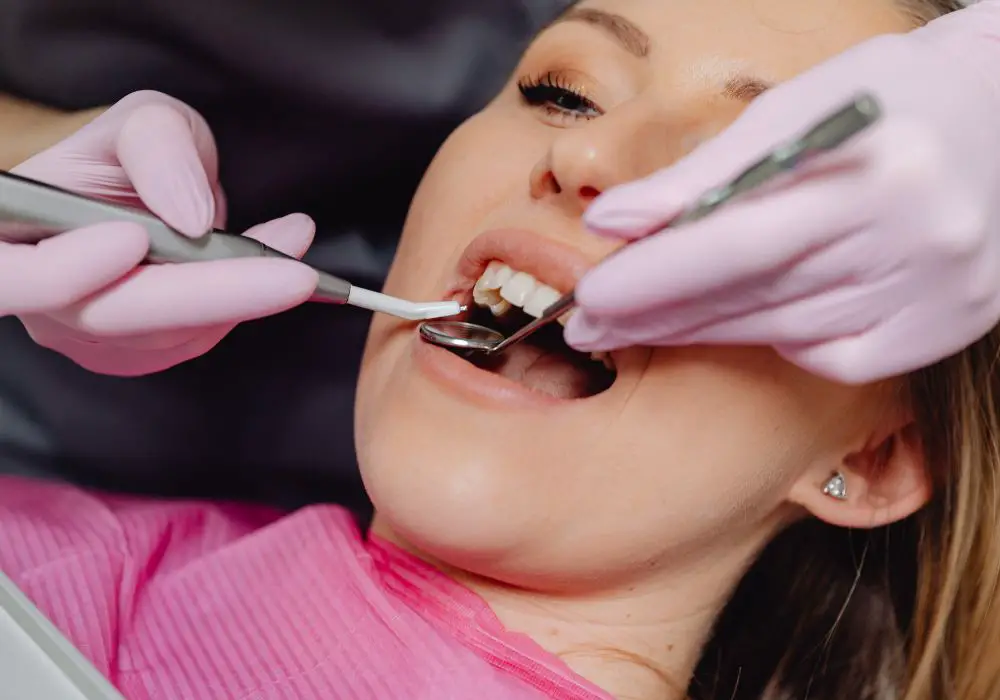
Having too many teeth removed in a single appointment can significantly increase the risks of post-operative complications and healing problems. Potential issues that may arise include:
- Excessive bleeding: Removing too many teeth can disrupt blood clotting and healing, leading to dangerous bleeding that is difficult to control.
- Increased infection risk: Taking out numerous teeth in one area leaves large voids in the gums vulnerable to food particles and bacteria getting trapped, raising the risk of developing a painful post-extraction infection.
- Sinus involvement: Extracting upper molars too close to the sinus can lead to a perforated sinus membrane or sinusitis.
- Nerve injury: Removing multiple lower teeth near the inferior alveolar nerve increases the chance of nerve damage leading to numbness.
- Jaw fracture: Forcing out multiple firmly anchored teeth at once puts excessive stress on the jawbone that could cause it to fracture.
- Soft tissue trauma: Extensive tissue retraction and manipulation during multiple extractions can damage the gums and cheek tissues leading to painful ulcerations.
- Alveolar osteitis: Removing too many teeth from one area may significantly slow healing and increase the risk of developing a painful condition known as “dry socket”.
- Impact on bite: Taking out multiple back teeth all at once may shift the remaining teeth leading to bite problems.
- Aesthetic concerns: Extracting multiple front teeth together severely affects smile appearance and symmetry.
- Need for hospitalization: If excessive bleeding occurs or infections develop after multiple extractions, hospital admission for intravenous antibiotics or bleeding control procedures may be required.
To avoid extraction complications, dentists should carefully evaluate each patient and limit the number of teeth removed per visit based on health status, extraction complexity, and potential risks.
How can extracting teeth affect your appearance?
Getting multiple teeth extracted, especially front teeth, can significantly impact the aesthetics of your smile and facial appearance. Here are some of the ways that removing teeth may alter looks:
- Loss of lip support – Missing teeth can cause the lips to invert and collapse inward giving the appearance of premature aging.
- Sunken cheeks – Extracting back teeth decreases cheek fullness making the midface look more hollow and sunken.
- Changed smile line – Without front teeth, the upper lip may appear shorter and the smile line is lowered.
- Altered facial symmetry – Removing non-matching teeth can make the left and right side of the face and smile seem crooked or uneven.
- Dark spaces visible – Gaps from missing teeth show through and look unsightly when smiling or talking.
- Collapsed bite – Lack of molars can cause bite collapse making the face look shortened.
- Jaw ridgeloss – Missing teeth can lead to gradual bone loss reducing jawbone definition and facial support.
- “Toothless grin” – Removing multiple upper and lower front teeth gives the appearance of being toothless.
Fortunately, options exist to restore facial aesthetics after losing teeth:
- Dental bridges – Fixed bridgework replaces missing teeth and maintains facial dimensions
- Removable partials – Partial dentures replace gaps from lost teeth.
- Dental implants – Implants halt bone loss and replicate natural teeth.
- Tooth-colored fillings – Fillings make dark extraction spaces less noticeable.
Consulting your dentist to develop an aesthetic treatment plan can help restore an attractive smile and beautiful face after getting teeth extracted. Proper planning and timely replacement of removed teeth prevents undesirable changes in appearance.
Is it better to extract one tooth at a time?
In most cases, it is better to have teeth extracted one at a time rather than removing multiple teeth in one appointment. Here are some benefits to a more conservative approach:
- Less pain and swelling – Removing teeth individually results in minimal post-operative discomfort compared to extractions of multiple teeth.
- Quicker healing – Optimal healing occurs when only one or two teeth are extracted per area. This lowers chances of complications.
- Easier to control bleeding – Taking out one tooth has less impact on blood clotting and bleeding is easier to manage.
- Lower infection risk – A single extraction site is less vulnerable to food and bacteria irritation or infection.
- Preserves jaw bone – Individual extractions allow bone to refill where each tooth was removed, maintaining a stronger jawbone.
- Supports proper bite – Gradual extractions prevent major tooth shifting or bite collapse that can occur with instant removal of multiple teeth.
- Better aesthetically – Slowly extracting over time can look more natural than suddenly having large gaps from multiple missing teeth.
- Allows time to replace teeth – Removing teeth individually stages treatment and gives time to sequentially replace each tooth lost.
- Less trauma to tissues – Routine single extractions are less invasive and safer for gums, nerves and sinuses.
- Improved recovery – Patients feel well enough to resume normal activities sooner when fewer teeth are removed per appointment.
While multiple teeth often do need extraction, staging the process over several office visits is ideal. However, some circumstances like severe infection may warrant removing several teeth in one visit when medically indicated.
What questions should I ask my dentist before getting teeth extracted?
Having one or more teeth extracted is a significant dental procedure that requires proper planning and preparation. Here are some questions you may want to ask your dentist beforehand:
- Why do you recommend I have the teeth removed? What are the risks if they are left in place?
- How many teeth do you advise extracting at one time based on my specific health status?
- Will any of the extractions be complex or require surgical techniques like bone removal?
- How long is the recovery period typically for the recommended number of extractions?
- Should I plan for someone to assist me in the days following the procedure?
- What kind of post-operative pain or swelling can I expect and how will it be managed?
- Are there options like bridges or implants to replace the teeth instead of extracting them?
- How soon after the extractions can replacement teeth be placed?
- Will extracting the teeth noticeably change the aesthetics of my smile or face?
- Could removing the teeth potentially affect my bite or ability to chew?
- What precautions should I take before the extraction appointment and post-operatively to prevent complications?
- Will stitches be required? If so, when and how will they be removed?
- What steps can I take to promote optimal healing after the extractions?
Discussing the extraction plan thoroughly with your dentist is important to understand what to expect and how to get the best possible outcome from the procedure.


